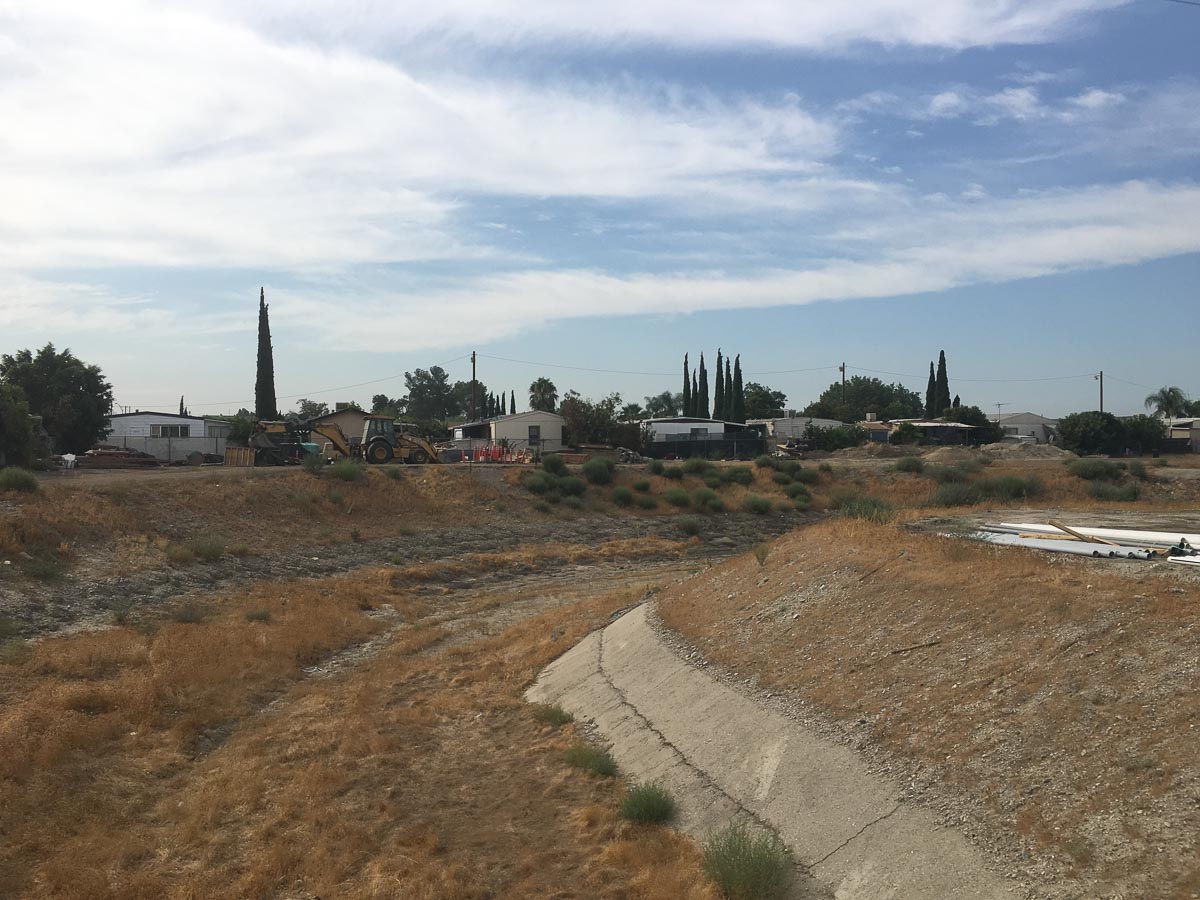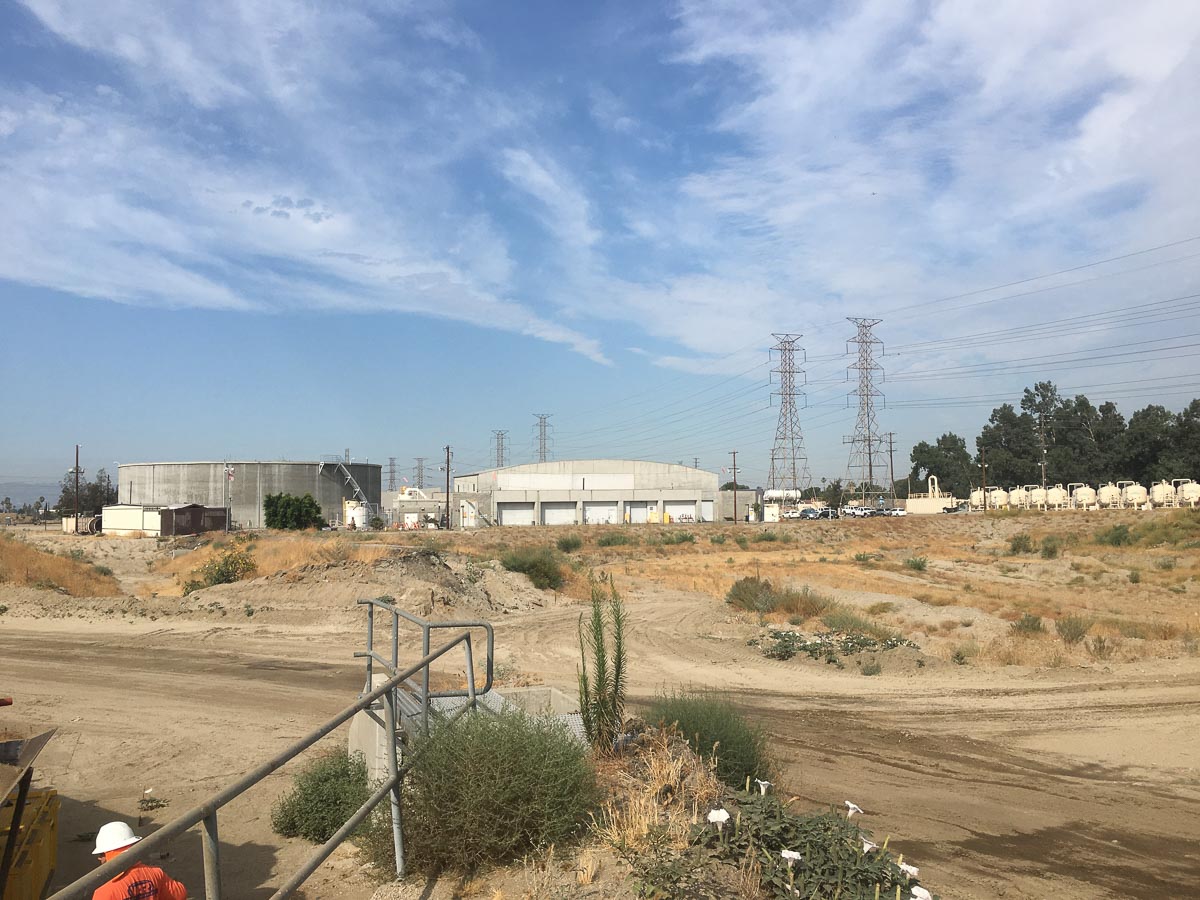Heavy rains last winter brought much needed relief to California, refilling depleted reservoirs and coating the mountains with record levels of snow. On April 7, Governor Jerry Brown declared an end to the state’s five-year drought with a cautionary statement. “The drought emergency is over” he said, “but the next drought could be around the corner. Conservation must remain a way of life.”
Indeed, though the emergency may be over, many parts of the state are still experiencing drought conditions and limiting water use.
For several decades, the Los Angeles County Department of Water and Power has been working to preserve rainwater for public consumption. Its latest effort involves what are known as spreading grounds, large pits designed to collect rainwater in areas with relatively porous soil. When it rains, the pits fill with water, which then percolates into natural basins underground.
Though the pits have actually been around for a century, in the past few decades the county has been working on enhancing them to provide water for local communities. The county’s 27 existing pits will be combined and enhanced to make 10 larger spreading grounds, some of which will be open to the public as parkland. The enhancements advance goals for multiple county projects, like LADWP’s Rainwater Capture Master Plan and LA Mayor Eric Garcetti’s Sustainable City Plan. Agencies across Southern California are looking to use rainwater to solve water supply issues and spreading grounds are just one part of those plans.
The $29 million project splits its funding between LADWP, the Los Angeles County Flood Control District and the state. When it comes to the budget for all the county’s spreading grounds projects, “It’s kind of open-ended” said Steve Frasher, public information officer with LADWP. “Projects are on-going all the time.”

Flood control channel.
Peter Segall
After disastrous flooding in Los Angeles during the first half of the 20th century, city officials converted the Los Angeles River basin into a network of flood control channels. Completed in the early 1960s, these channels prevented damaging floods but directed precious rainwater into the Pacific. Now, the grounds, built alongside the control channels that used to direct rainwater into the LA River and from there into the ocean, seek to capture and re-use some of that rainwater.
“This area floods pretty good, actually,” said Wes Brodeur, Senior Project Manager for W.A. Rasic Construction, the firm in charge of the Tujunga Wash Spreading Grounds enhancement project in the San Fernando Valley. “This is probably the ideal spot when all the water comes here,” he said during a recent visit to the grounds in a residential neighborhood off Interstate 5 in an area known as Sun Valley.
“The way the geology is out here, the rain soaks into the ground and then in a couple of days it’s dried up again,” said Brodeur. The site is under construction but the grounds have been working for some time. “We were still pumping [during the drought] but the production wasn’t as high as you think,” he said. “The ground water was about 30 to 40 feet below normal.” When completed, the grounds will be able to store roughly 5 billion gallons of water.

Empty basin, yet to be completed.
Peter Segall
Civil engineers have wanted better rainwater conservation for generations but political and fiscal obstacles frustrated efforts. In 1990, Congress approved funds for an Army Corps of Engineers study of the LA River basin. The study became an improvements project and, with funds from the federal government, the county was finally willing to overhaul its water management system.
Now, said Brodeur, pointing to the large concrete treatment plant on the other side of the site, “When these things fill up, [the water] percolate[s] into the ground, and then they pump it out and treat it right there.”
Across the road there’s another site, but this one is not for percolating. “This is one that’s going to be open to the public eventually,” said Brodeur. “We’re going to make a waterfall structure and put new fences around here. We’re going to do all kinds of beautification; sidewalks, walking paths.”
Though the construction isn’t yet finished, the grounds are functional and have been providing drinking water to the local community for about 15 months. This project is set to finish in spring of 2018, but other spreading grounds projects are planned. Looking at the site, Brodeur said, “Eventually there’s going to be a lake here but we’re a ways from getting to this area.”
Peter Segall is a freelance journalist based in Los Angeles.

